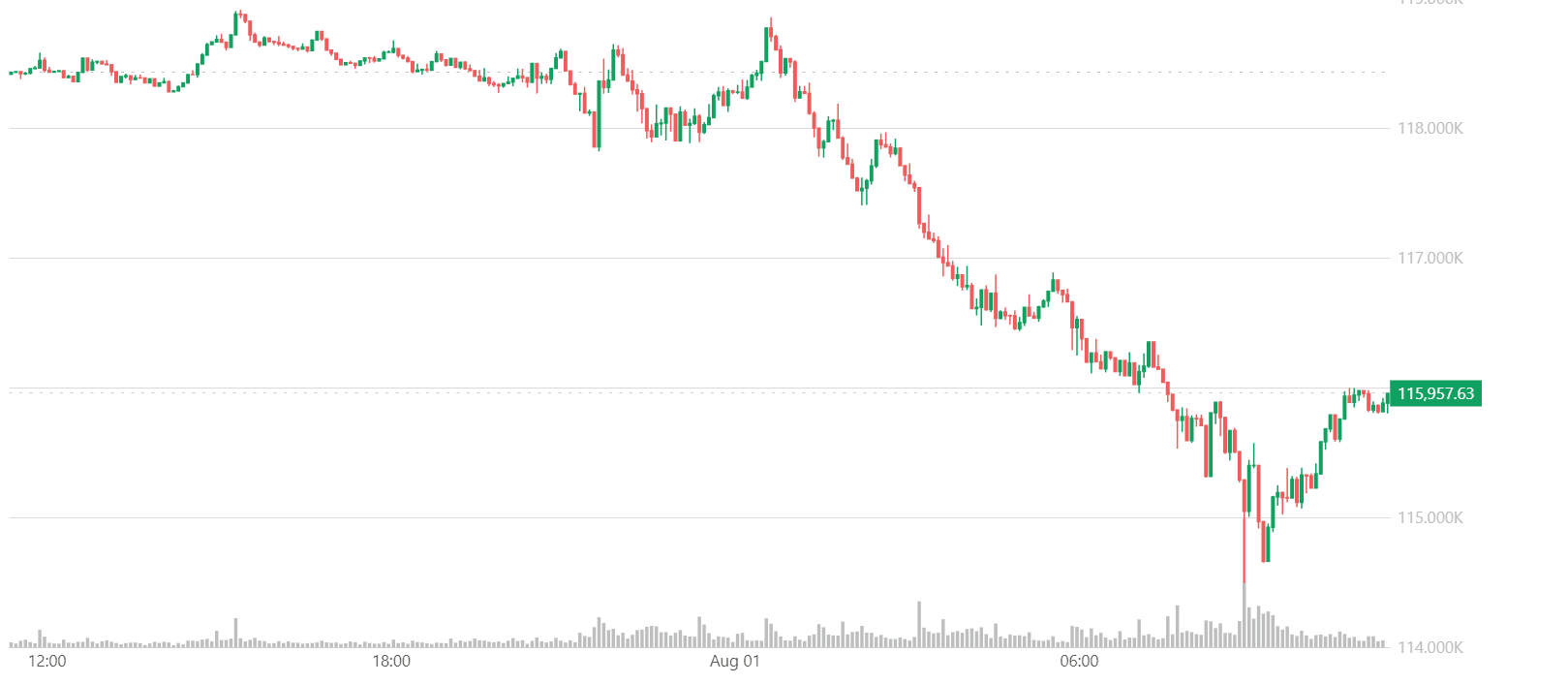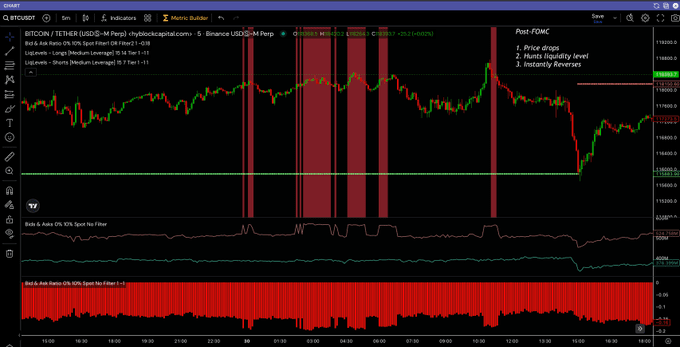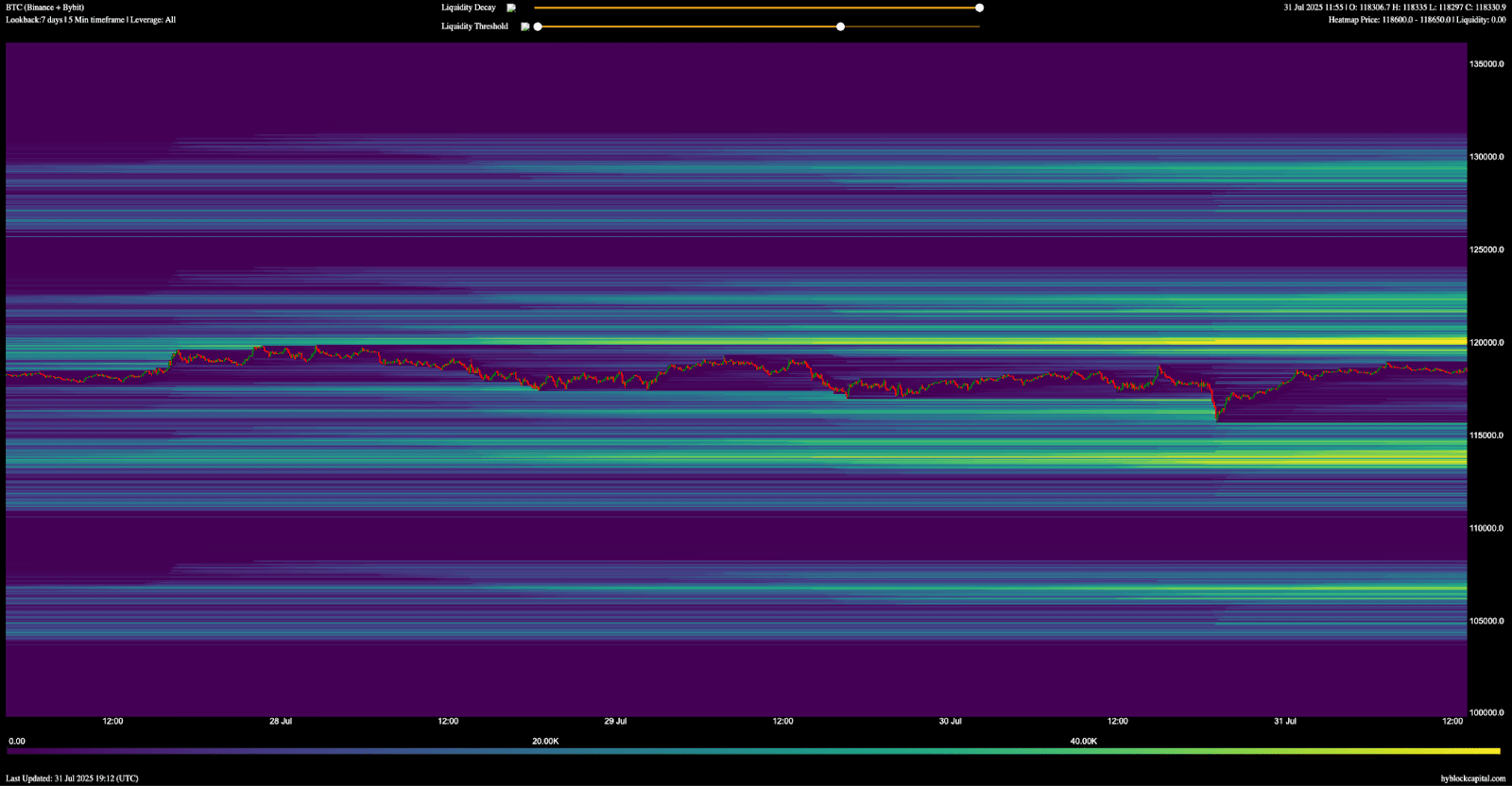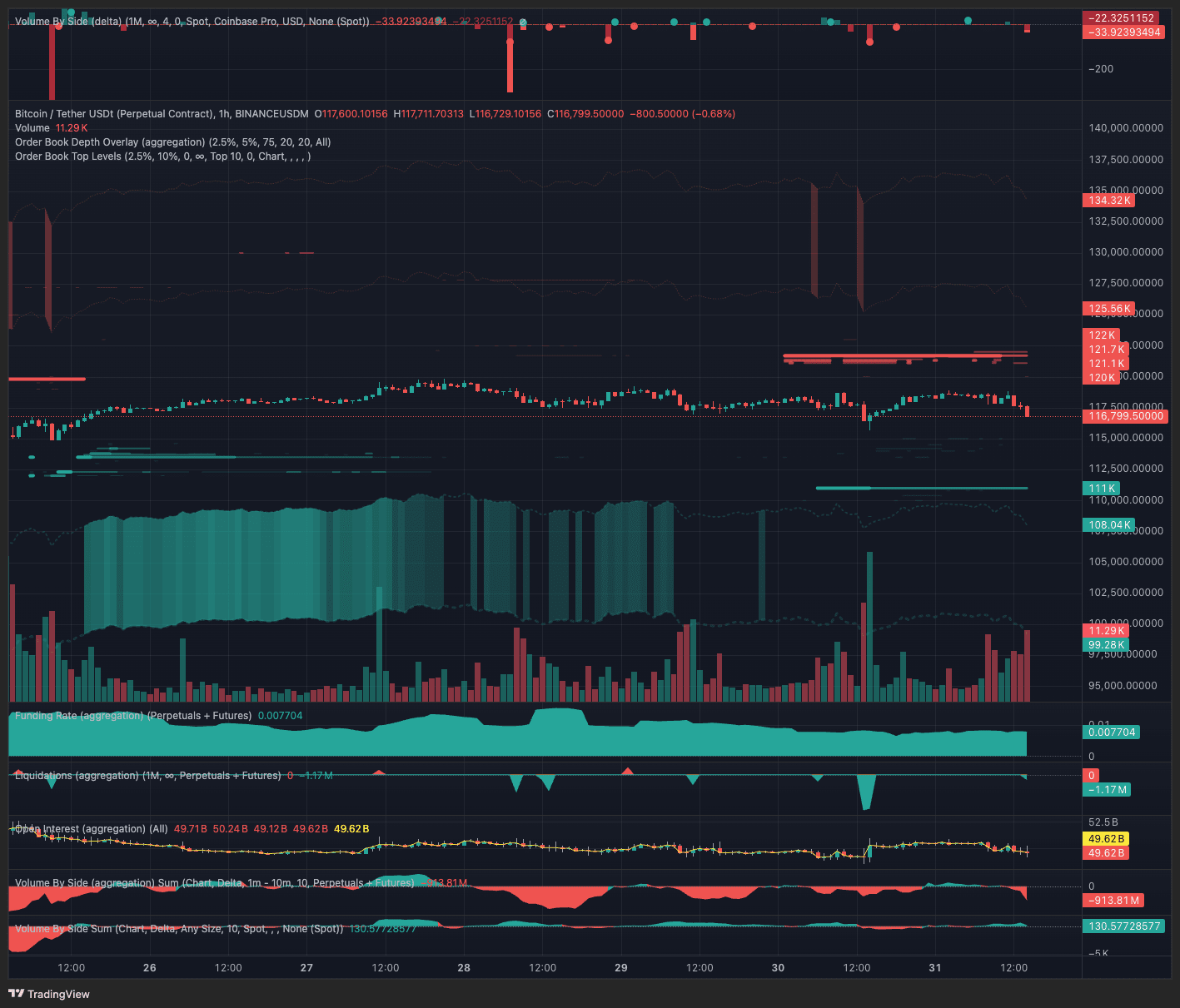On Friday (August 1), trading in Asia opened with Bitcoin currently priced at $115,827, expected to close down 2.3% during the week of Asian trading hours, after briefly falling below the $115,000 mark due to new tariffs from the U.S. Despite the apparent pullback, BTC remains within the consolidation range.

Ethereum maintained around $3,800 on Thursday, with a gain of over 50% in July, marking the best single-month performance since 2022. The market is generally optimistic about further breakthroughs, with analysts predicting this cycle will hit the $15,000 to $16,000 range. Contributing factors include $5.3 billion flowing into the U.S. spot Ethereum ETF and continued strong institutional demand.
The new round of tariff measures targeting global trade partners by the White House has put pressure on Asian markets, with the Nikkei 225 and Korea's KOSPI indices both opening lower. Bitcoin has also not escaped this fate. Historically, whenever the U.S. government announces tax increases, the digital asset market usually follows the stock market lower, although this correlation has shown signs of weakening recently.
According to CoinGlass data, approximately $260 million in long positions have been forcibly liquidated in the past four hours.
BTC is currently facing dual pressures: on the one hand, the risk aversion brought about by tariffs, and on the other, the continuous profit-taking following the historical highs set earlier this year.
CryptoQuant's latest report indicates that Bitcoin has just gone through the third round of large-scale profit-taking phase in the 2023–2025 bull market cycle. Data from the end of July shows that daily realized profits reached as high as $6 billion to $8 billion.
This wave of profit-taking continues the characteristics of the previous two rounds: a significant surge in the 'spent output profit ratio' (SOPR) for short-term holders, and the large sale of 80,000 BTC by an early whale on July 25.
A new group of whales—investors who have only built large positions in the past 155 days—are the core group driving the selling pressure in this round. Data shows that after this whale's sale, the total inflow of BTC to major exchanges surged to 70,000 coins in a single day, indicating a clear intention to exit at high levels.
The sell-off is not limited to BTC; Ethereum whales holding WBTC, USDT, and USDC also earned $40 million per day during the same period, further confirming that current crypto market funds are rotating out of high positions.
CryptoQuant points out that historically, after every round of large-scale profit-taking, there is usually a consolidation period lasting two to four months before the next upward trend begins. This round may replicate this pattern, especially against the backdrop of weakened risk appetite among U.S. investors.
The Coinbase premium index (used to measure the price difference between Coinbase and other exchanges) recently turned negative, indicating that domestic buyers in the U.S. are no longer willing to pay a premium for BTC.
Furthermore, renewed macro risks have intensified market risk aversion. The Trump administration announced a new round of tariffs, including measures against Canada, further impacting the global risk asset market. Stocks, bonds, and crypto assets have all declined, as investors worry about rising inflation and supply chain disruptions.
Market maker Enflux stated in a briefing to CoinDesk that in the absence of clear macro positive signals or structural capital inflows, market risk appetite is limited and confidence is low.
The institution noted: 'Until BTC or ETH successfully reclaims this round's local high, the market will continue to exhibit a volatile structure, with thematic rotation driving trading rhythm rather than trend-driven movements.'
Bitcoin is on the verge of breaking out.
Although Bitcoin once fell below $116,000, it still remains within the consolidation range formed over the past 18 days of $115,000 to $121,000. Market data indicates that this sideways pattern is about to be broken.
Analysts from Hyblock Capital described the price fluctuations before and after the FOMC meeting as a 'liquidity hunt', stating that 'a typical 15-minute hesitation candlestick appears, with both upper and lower shadows present, reflecting market uncertainty.' Analysts pointed out that the buy-sell ratio indicator turned red when the order depth was at 10%, increasing the likelihood of the price reaching the liquidation level of $115,883.

From the BTC/USDT perpetual contract liquidation heat map of Binance and Bybit, the current price range and liquidation distribution remain unchanged: after the price breaks $120,000, shorts will face massive liquidation, while if it falls below $115,000, longs will be at risk of liquidation.

According to aggregated order data provided by TRDR (with a depth of 2.5% to 10%), a dense sell wall appears at $121,100, while there is substantial buying support at $111,000.

On Wednesday, Cointelegraph analysts pointed out that the compression of Bitcoin prices, the lack of high leverage operations in the futures market, and the narrowing of the Bollinger Bands indicate that BTC may soon break out of its range. At that time, BTC's price was above the 20-day moving average, leading many traders to predict an upward breakout.
Although the market ultimately chose to test the liquidity area downwards, several positive factors are still at play. Capriole Investments founder Charles Edwards stated that the number of 'corporate treasury buyers' of Bitcoin has significantly increased over the past six weeks, with 'more than three companies on average purchasing Bitcoin daily.' He further added that his 'treasury buy-sell ratio' indicator shows a 'monthly buyer-seller ratio as high as 100:1.'

Additionally, after experiencing an outflow of $285 million last week, the spot Bitcoin ETF has recently recorded a net inflow again. According to SoSoValue data, since July 23, the major Bitcoin ETFs have accumulated a net inflow of $641.3 million, despite BTC prices still facing selling pressure.
This week, the White House released a cryptocurrency regulatory report, and SEC Chairman Paul Atkins elaborated for the first time in his speech 'American Leadership in the Digital Financial Revolution' on how the Trump administration and regulatory agencies will prioritize supporting the development of the U.S. crypto industry in the future.
Although the aforementioned policies have not significantly boosted coin prices in the short term, they clarify the regulatory path for institutional investors and enhance their confidence in heavily allocating Bitcoin and other crypto assets.
In the short term, if the bearish forces continue, Bitcoin prices may continue to probe lower, testing the bullish liquidity zone of $115,000 to $111,000. For bulls, the ideal scenario would be for strong buying to form at $111,000, leading to a surge in trading volume and reclaiming the range above $116,000; a more optimistic situation would see the cumulative trading difference between spot and perpetual contracts turn positive, pushing prices to break through the $120,000 resistance and close firmly above it.